Mirrors
Inspired by discussions about multiplying light sources, this deconstructed DLP projector is operated by a troupe of small servo-controlled mirrors. Liberated from their electronic confines, they perform choreographed dance and split light as it suits them. Servo motors and mounts, mirrors, acrylic, projector, Arduino, OpenFrameworks, custom software. Presented at the School For Poetic Computation’s Fall 2018 Showcase in NYC.
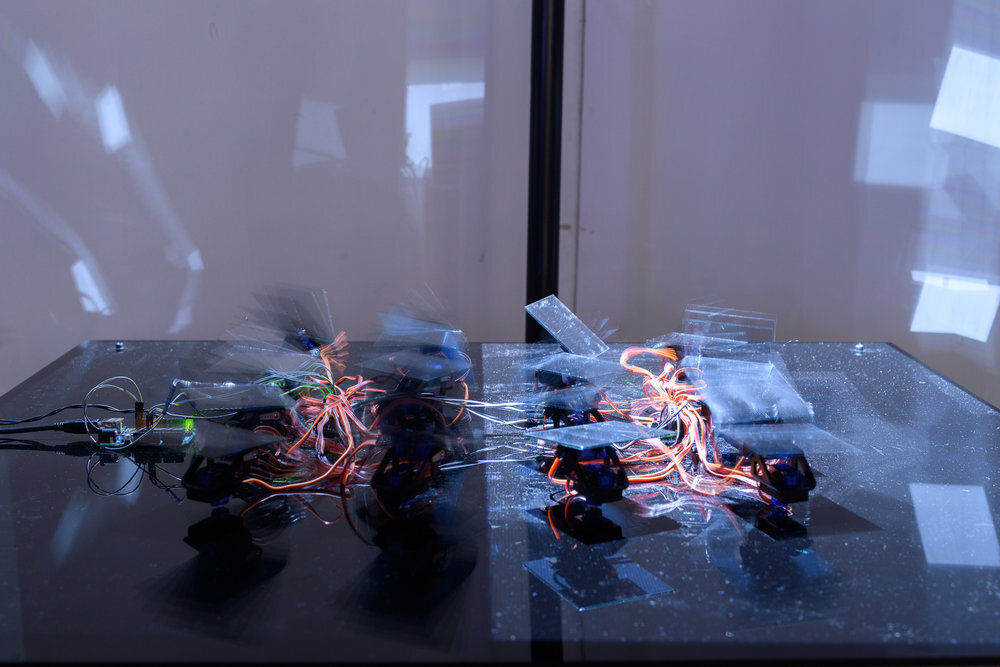
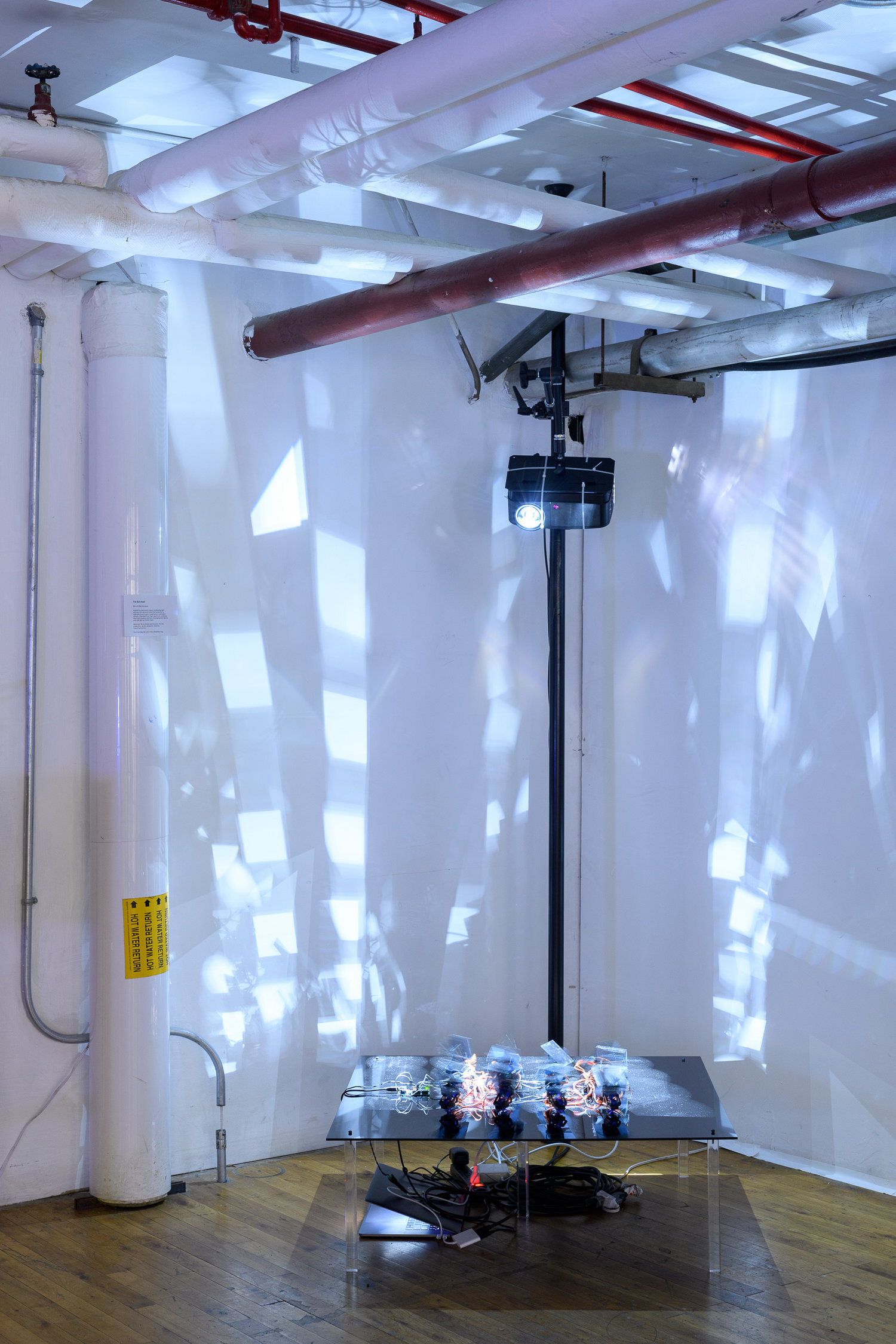
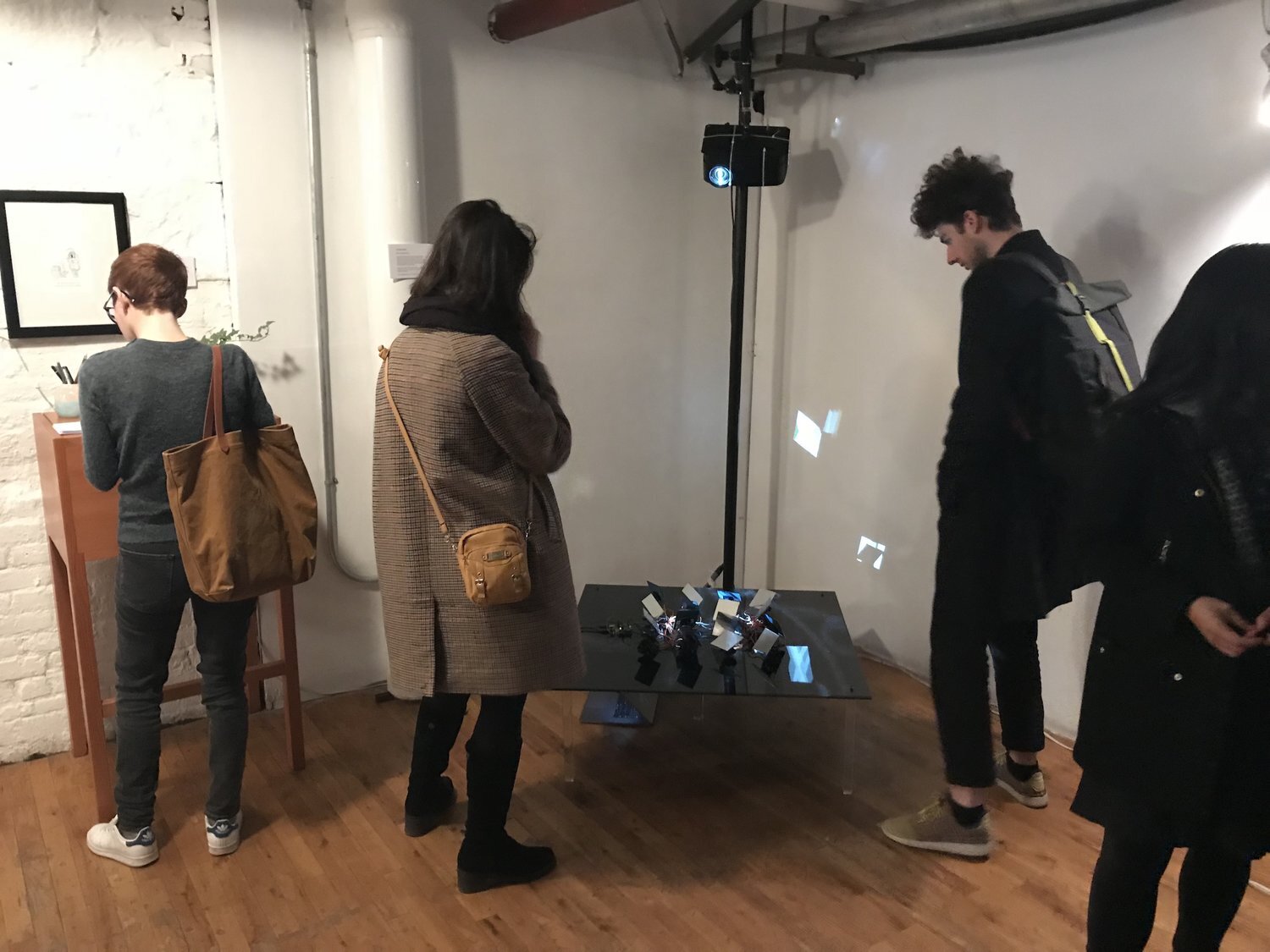

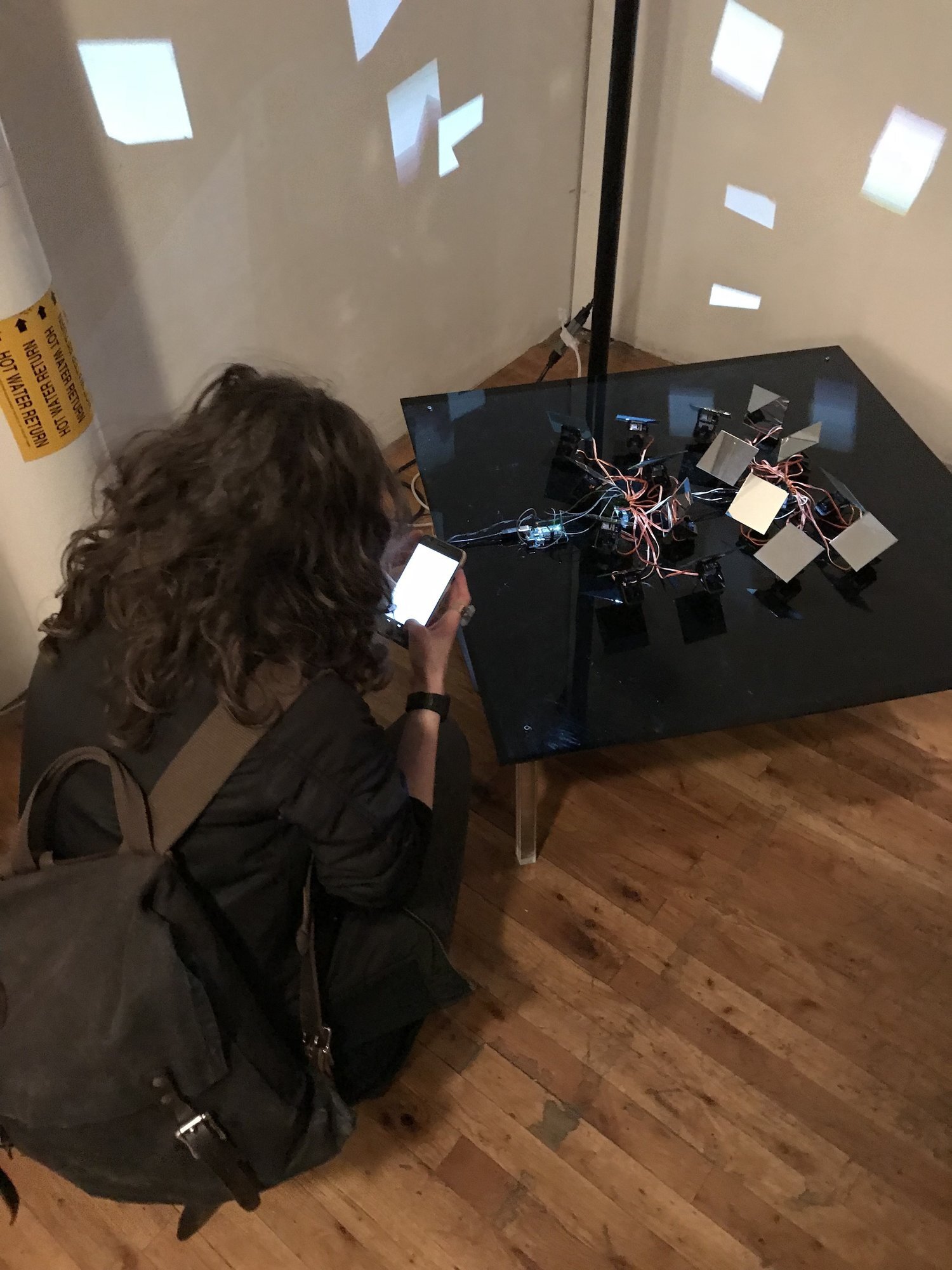
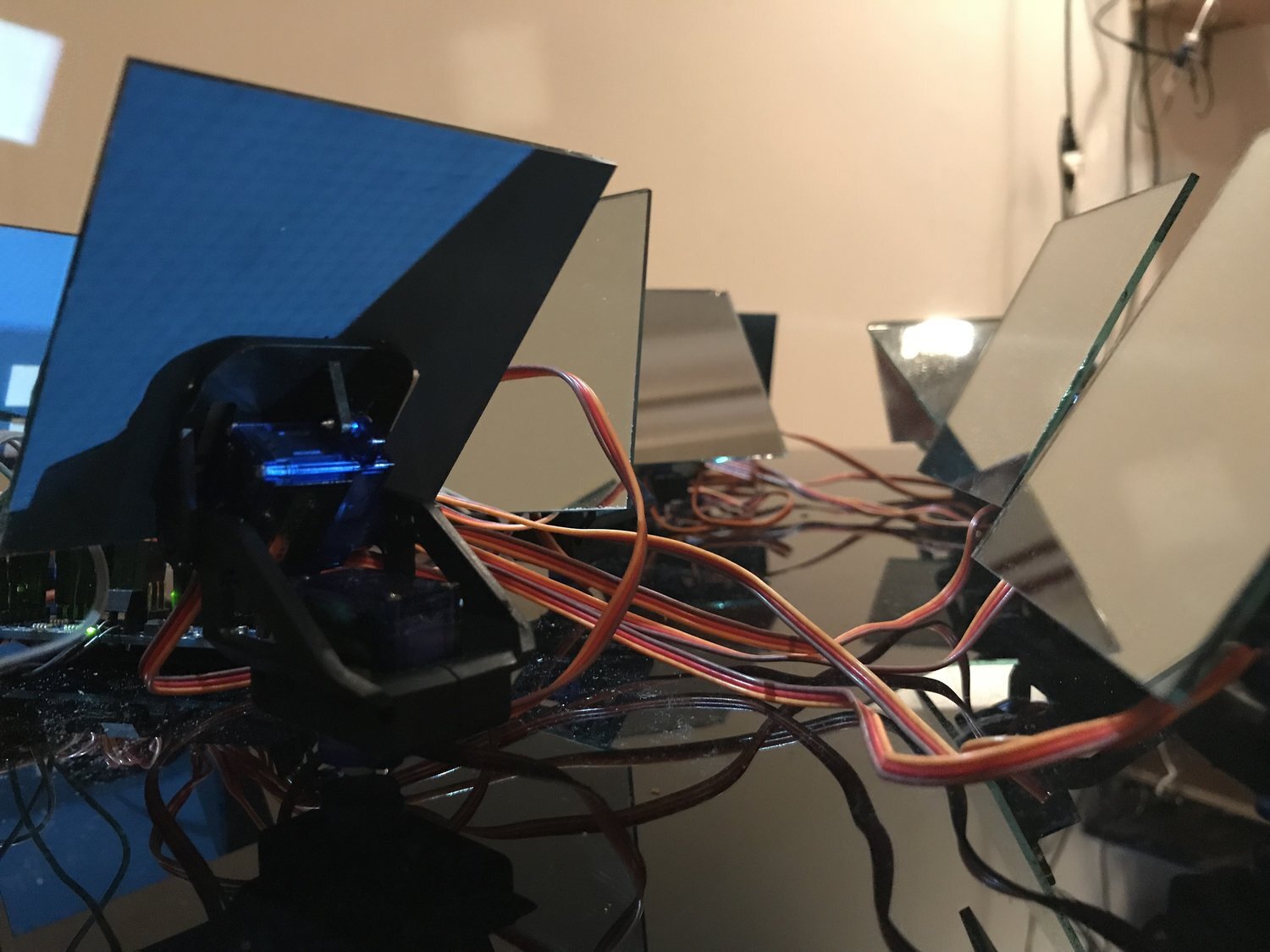
concept
While working on experiments involving projection of 3d forms, I landed on a technical solution of programmable mirrors, similar to those found at a small scale inside a modern projector. In creating initial prototypes of these mirrors, I realized that the prototypes themselves took on the qualities of small animals — some referred to them as baby birds, others felt an immediate desire to care for the motorized mirrors.
This anthropomorphization of simple robots tied back to critical theory we had covered at SFPC with American Artist — specifically, that our normalized form of technology has arisen from a set of decisions straight white men had made in Silicon Valley in the 70s and 80s. Those decisions have led to enclosed, abstracted boxes with white screens (among many other abstractions), while excluding other voices in designing how we interact with technology. With the small, animal-like mirror creatures, and this critical backdrop, I decided to keep as much of the innate jittery and janky qualities the motors and mirrors had brought with them, and decided to expose as much of the circuity powering them as possible. Some of the motion and choreography the mirrors took on was programmed, but a fair amount of it was stray voltage in the electronics, mounts that drifted over the performance, and motors that only worked some of the time. These potential defects were precisely what gave the mirrors their character.
I created a series of simple projection patterns, paired with a series of simple motion patterns — for a total of 42 patterns. These patterns allowed the mirrors to re-project light poems onto the walls near them, where every bit of stray motion was amplified within the room, drifting across the ceiling and walls, and scattering prisms when the motors were jittery.
As a bonus in working with mirrors and servo motors as some of my materials, I used commodity motors and servo mounts, traditionally used to mount cameras to small drones, and replace the surveillance of the cameras with mirrors — an unintended and underdeveloped play on selfies, and ‘veillance’. I’m interested in exploring this conceptual space further, particularly with head tracking connected to the mirrors.